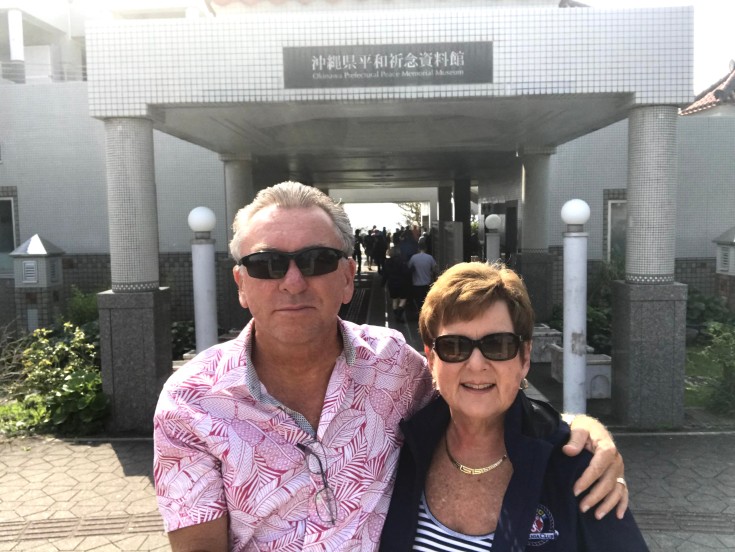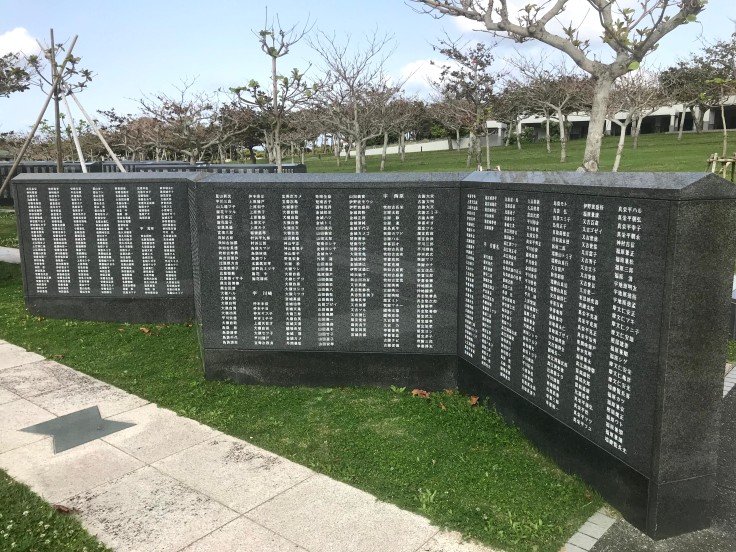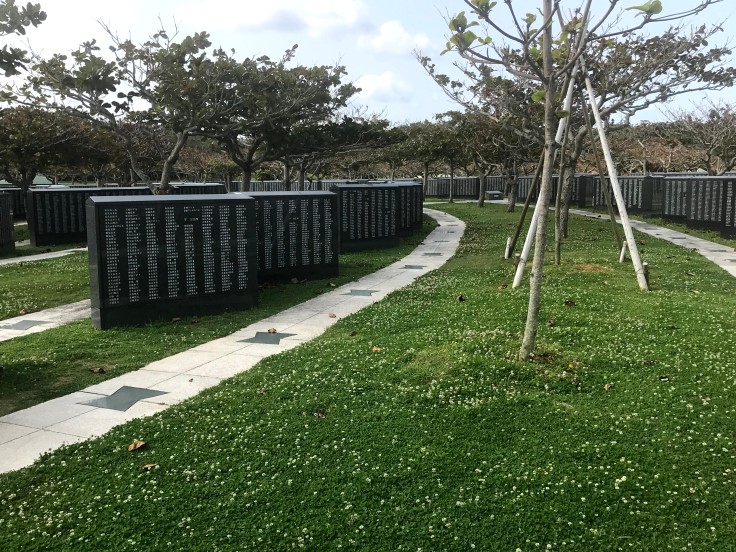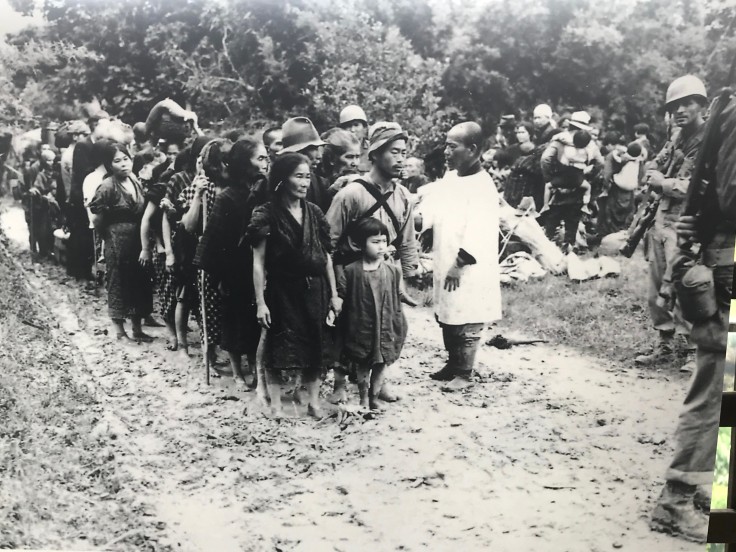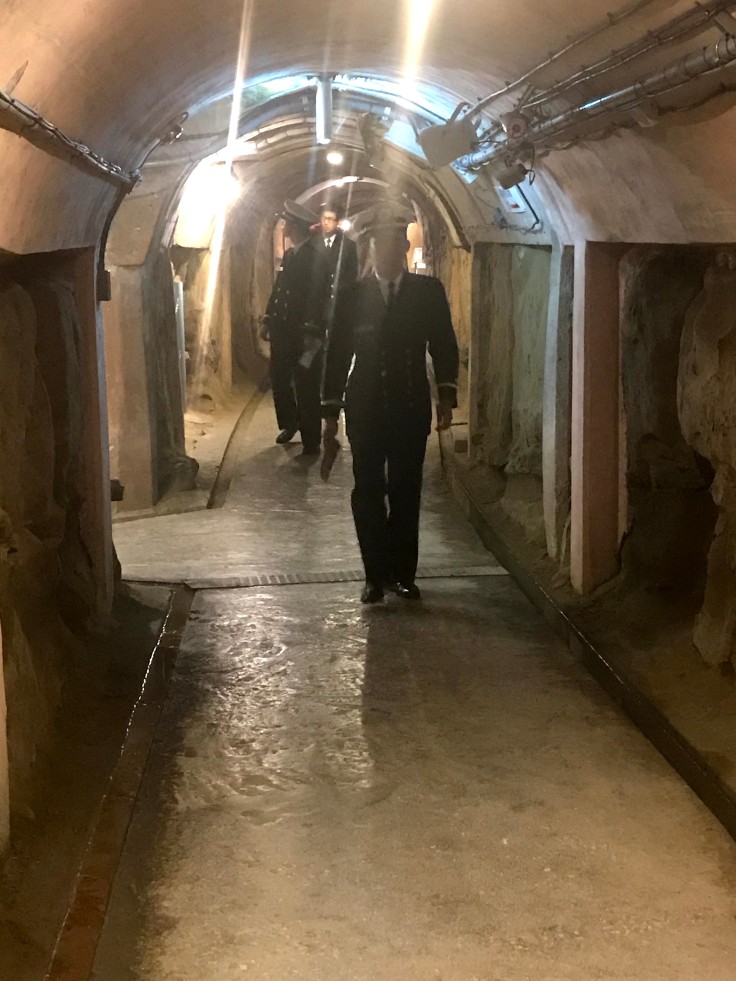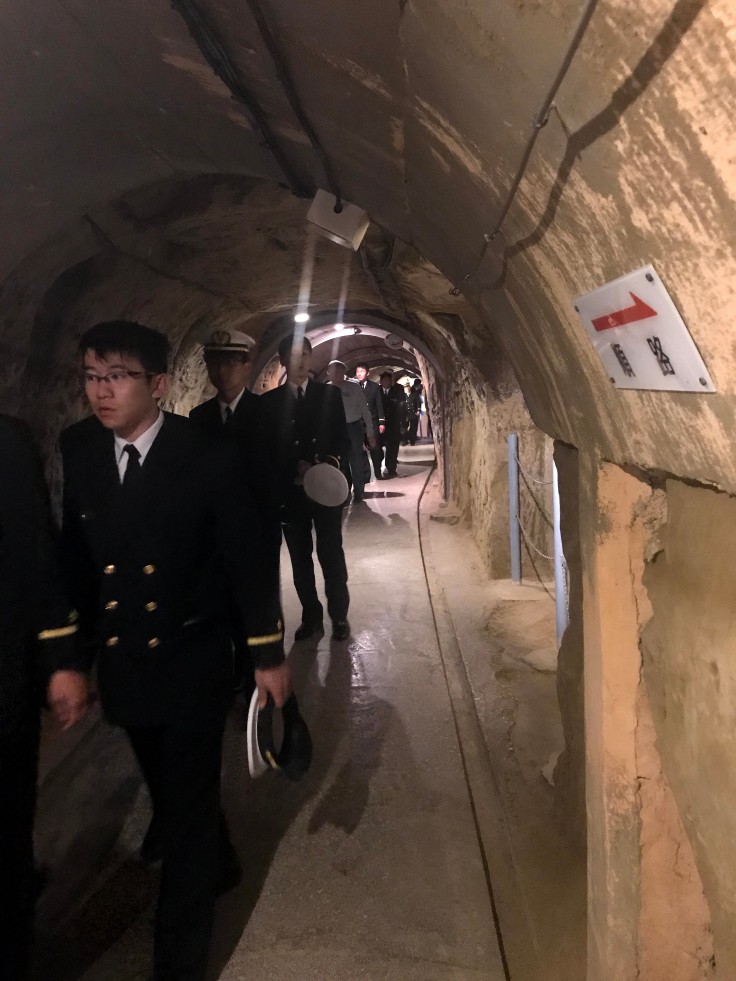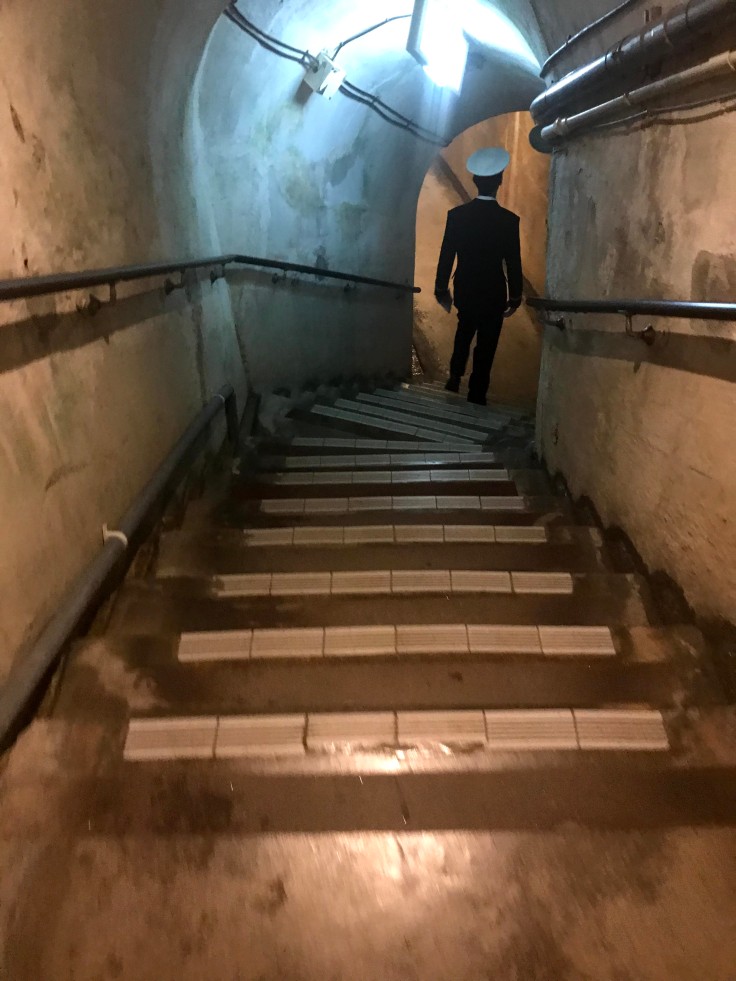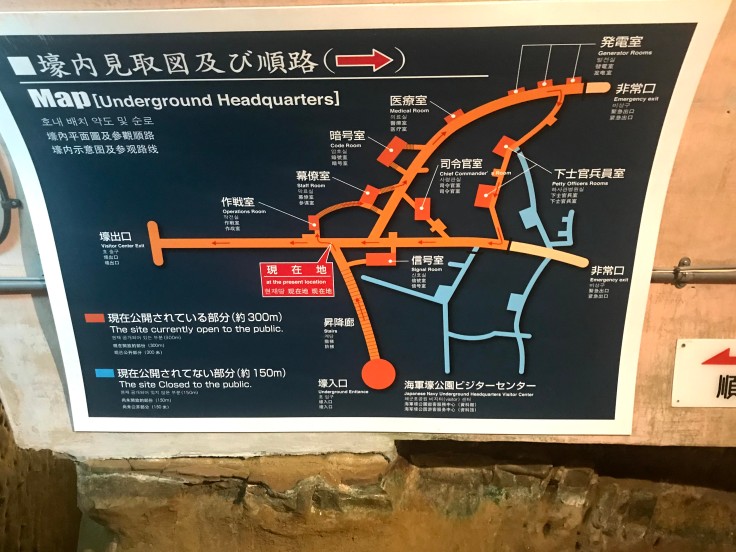What an emotional day. The Battle of Okinawa was one of the bloodiest of WWII. More than 200,000 individuals lost their lives, over half of them civilians, and the island of Okinawa was all but obliterated. The battle has been nick-named the “Typhoon of Steel” because of the ferocity of the fighting, the intensity of the Japanese kamikaze attacks and the overwhelming number of allied ships and armored vehicles that assaulted the island. The U.S. dropped more than two million bombs over a period of 83 days. When the fighting ended all of Okinawa’s buildings, its physical history and artifacts, and 25% of its population were gone.
We visited the Okinawa Prefectural Peace Memorial Museum, devoted to promoting peace by reminding all who visit of the atrocities and absurdity of war. Located on Mabune Hill, next to the “suicide cliffs” where many Japanese soldiers chose to jump their deaths rather than surrender, the museum includes an outer area with a semi-circular avenue of stones similar to those found at the Vietnam Memorial in Washington, D.C. It includes 32 memorial monuments engraved with the names of those who died in the Battle of Okinawa, organized by nationality or ethnicity. The stones are located near the exact place where Japanese Commander General Mitsuru Ushijima committed suicide rather than surrender to the U.S. troops. It is impossible to describe what it felt like to stand in a space where so much terror was experienced and so much death occurred.
The inside of the museum is beautifully and effectively done. It is incredible respectful to the memories of those who perished and so clear in its mission to promote peace. It doesn’t cut the Japanese or the Americans any slack for their part in the Battle, an includes a number of disturbing photos from the time. It also includes testimonials from those who were there, people who experienced the war at all different ages. You can listen to the words of someone who was 5 years old when it happened, 10 years old, 20…each offers a unique perspective. One of the stories Pam listened to was from a woman who was about 12 when the battle occurred. She was hiding in a tunnel with her five younger siblings. They were suffering from dehydration and malnutrition but were afraid to leave the tunnel. She finally convinced them to crawl out and their worst fears were realized – they were found by U.S. soldiers. The soldiers immediately gave them water and offered them two squares of chocolate each. The children did not speak English and could not understand what the soldiers were trying to tell them. They didn’t know what chocolate was and were certain it was going to kill them but agreed that it was better to eat it and die together than face whatever else might lie ahead. They ate the chocolate and it didn’t kill them. Then the soldiers brought them milk. It was incredible to hear her relive the experience.
After the Peace Museum we visited the Former Japanese Navy Underground Headquarters, a series of tunnels constructed using hoes and picks that still exist in their original form. Visitors are able to see replicas of the commanding officers’ room, staff room, generator room, etc. One hundred seventy-five men committed suicide here (are you seeing a theme?), but not before their Commanding Officer sent a telegram to the Navy Vice Admiral commending the people of Okinawa for their cooperation and self-sacrifice. Every single civilian – whether they were 3 years old or 80 – was conscripted into service. Near the end of the war, they were all given grenades, and many were forced to participate in mass suicides. It is such a sad story. Throughout the museum hang chains of 1,000 origami cranes, created to represent grief for those who passed and a prayer for the peace of their souls and of the world. A group of Japanese Navy cadets were there at the same time, and it was kind of cool to share the space with them as they absorbed lessons for their own future.
We had the same guide today as we had yesterday. She was a young girl living in Nagasaki when the U.S. dropped an atomic bomb there. At one point Pam asked her how, given this history, she could be so welcoming and gracious to Americans. Soda answered, “It was war. People do horrible things in war. And we started it – we bombed Pearl Harbor first. Japan had nothing after the war, nothing. I remember going to school and getting the powdered milk the Americans provided to the school. It was the only nutrition I had. You saved my life. After the war the U.S. was the only country that came to help us rebuild. And instead of keeping Okinawa as an American territory and killing the Emperor, as China or Russia would have, you let Japan keep Okinawa and you let the Emperor live. I love Americans. They are the kindest people in the world.”

